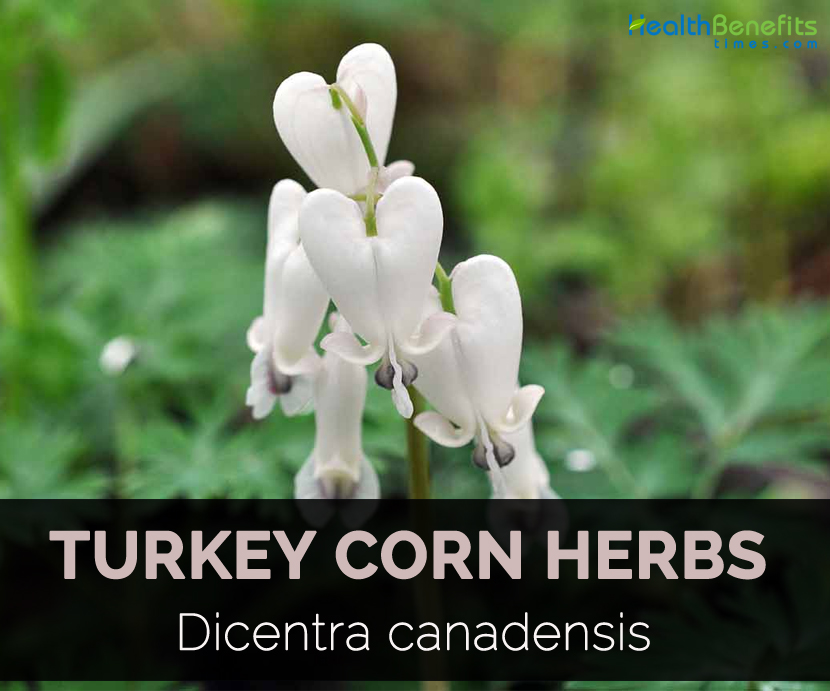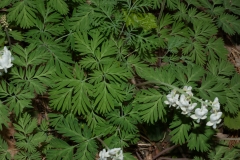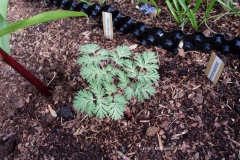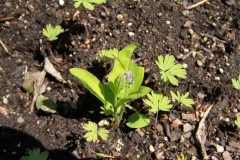| Turkey Corn Quick Facts | |
|---|---|
| Name: | Turkey Corn |
| Scientific Name: | Dicentra canadensis |
| Origin | Deciduous woodland in eastern North America |
| Shapes | Capsules, 5-15 mm long, narrowly more or less ellipsoid |
| Name | Turkey Corn |
|---|---|
| Scientific Name | Dicentra canadensis |
| Native | Deciduous woodland in eastern North America |
| Common/English Name | Wild Turkey Corn, Choice Dielytra, Stagger Weed, Squirrel Corn |
| Stem | 6-25 cm in length |
| Leaf | (3-5 x 1-3 cm) wide |
| Flowering Season | Mid spring to autumn |
| Flower | White, pale pink, heart shaped, 8-12 mm in diameter |
| Fruit shape & size | Capsules, 5-15 mm long, narrowly more or less ellipsoid |
| Seed | Somewhat flattened, kidney-shaped, 1.5-2.5 mm long |
| Medicinal part | The root |
Fruits
Fruits are dehiscent capsules about 5-15 mm long and narrowly more or less ellipsoid. The surface is often slightly swollen over seeds, smooth and 3 to numerous seeded. Seeds are 1.5 to 2.5 mm long, somewhat flattened, kidney shaped in outline, rounded along rim. Surface is smooth, shiny and black.
Uses
Do not disregard the action of this herb by the barnyard sound of the common name (the root growth resembles a corn kernel). Turkey corn is one of the best alterative agents in the herbal kingdom. It is usually combined with other remedies such as Burdock (Lappa), Queen’s delight (Stillingia), or Prickly ash (Xanthoxylum fraxineum). A Philadelphia professor has this to say about the small root: “There is no fact better established than that this medicine, judiciously administered, has the power to remove syphilis from the system.” The tincture should be prepared from the fresh herb and given in doses of 20–30 drops, three times a day. Also admirable for scrofula and all skin diseases. Recommended in menstrual complaints, as its tonic properties render it as an alterative in all enfeebled conditions.
Dose
Infusion of 1 teaspoonful of the root, cut small or granulated, to 1 cupful of boiling water; steep ½ hr.; drink cold a wineglassful three or four times a day. Of the powder, 5–10 grains. Of the tincture, 20–30 drops three or four times a day.
Homoeopathic Clinical
Tincture of bulbous root gathered when plant is in flower; trituration of dried root; triturations of Corydalia—Gastric catarrh, Scrofula, Syphilis, Ulcerations.
Russian Experience
The most interesting Russian literature is given to one kind of Turkey corn, Corydalis, commonly called “Chochlatka”, which means in folk language hens or chickens cackling indiscriminately. The shadowy bush or brush growth of central and south Russia is an ideal setting for survival. Indication of past Folk Medicine is not mentioned, only Atlas (1963) giving botanical description and medical details.
Clinically
As extracts of Corydil and in combinations, for trembling, nerve paralysis and nerve disorders: it stimulates and increases muscle tone. Experiments on animals show positive effect on the central nervous system. Physiologically Iscoriaodine is calming to the central nervous system. As there is no other information from available books, interested readers will get the best scientific information about chemical, botanical and clinical properties from Atlas, Moscow, 1963.
This brief information is given with the thought that the local knowledge of the Indians and Folk Medicine in North America has been confirmed scientifically and clinically by scientists in other countries.
Medicinal uses
- It is used by Native Americans for treating ulcers, sores, cramps, burns, fever, tapeworms, diarrhea and irregular periods.
- It is also used to stop vomiting.
- It is used as a spring emetic, blood purifier and also in cough syrups.
- Tubers are used for treating chronic cutaneous affections, scrofula, syphilis and menstrual complaints.
References:
https://en.wikipedia.org/wiki/Dicentra_canadensis
https://www.minnesotawildflowers.info/flower/squirrel-corn
http://temperate.theferns.info/plant/Dicentra+canadensis
https://plants.usda.gov/core/profile?symbol=DICA
http://www.missouriplants.com/whitealt/Dicentra_canadensis_page.html





